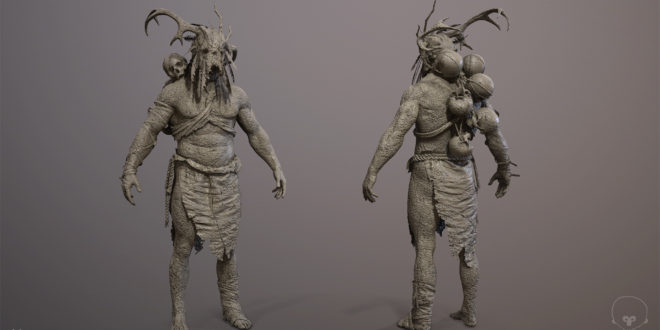Ninja Theory picked up four awards at this week’s Develop Awards, off the back of smash-hit Hellblade: Senua’s Sacrifice. The studio has talked before about how it sees the game as an indie triple-A title, or triple-I as some call it. At the Develop:Brighton conference this week, ts developers talked about the ups-and-downs of trying to hit such a high quality bar with such a small team.
Matt Stoneham, principal technical artist, said about the project: “We wanted to challenge our own preconceptions of not just what was possible with small team but what was possible in games. At no point did we want to compromise on quality, so this was a challenge, how can we deliver an amazing experience to really high quality levels with just 15-20 people?
“One of the great things about working with a small team, is that any one group within it are already multi-disciplined and highly-experienced. Bringing the right people together at the right points helped us make good calls for a good feedback experience into the design process at an early stage. This really helped us.”
HIGH CONCEPT
Jeff Goslan, senior character artist, spoke about how the small team had to adapt their roles to cover gaps, with him bridging character design and concept art after the team’s only concept artist left. Due to his superior experience in 3D over 2D, he built the concepts in 3D first off, allowing them to be dropped straight into Unreal and lit to get a better idea of the final look.
He was highly-complementary about the lack of process: “The nice thing of this, is if you thought of some idea half-way through you could implement it, you didn’t have this massive sign-off process you get on a larger triple-A production. On a larger production you have to have everything signed of by three different producers or directors, the nice thing we indie triple-A was the agility we had to change stuff and continue to try and express ourselves in the best way.
“The biggest lesson was the need to be extra creative, improvising, some compromise to a degree on quality, things don’t have to be as 100 per cent as they need to be. Anyone thinking of making the move from Triple-A to indie, then embrace that uncertainty, enjoy the creative freedom.”
“You might have noticed that all the enemies don’t have facial features, this a key design aesthetic, but it was one born out of a very real resource restriction,” added Stoneham.
ALL RIGGED UP
When it came to animating the characters, the team decided to stick to a strict class structure in order to reduce the workload.
This had a “huge positive impact,” Stoneham said. “By way of comparison, DMC had 32 characters and 23 unique rigs, Hellblade has 16 characters, 12 of those are rigged, and those 12 rigs are derived from just three base rigs: male, female and quadruped.”
As well as reducing the total amount of work and unnecessary repetition, “this dramatically increases the scope for asset sharing, either as the basis for something new, or sharing entire movement sets across characters.”
“Getting the rig right early on pays huge divdidends across the lifetime of the project. it meant we could reduce departmental dependencies on new asset generation and so the majority of character, animation, technical and design work could be completed in parallel.”
Also that concept art being done in 3D initially meant that the animators could check the work in 3D early on in the process, before all the modelling work had been done, to make sure they weren’t being handed a “shit sandwich,” Goslan said.

 MCV/DEVELOP News, events, research and jobs from the games industry
MCV/DEVELOP News, events, research and jobs from the games industry




